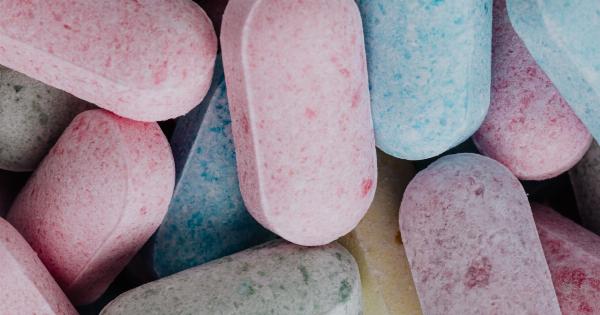Perspiration, also known as sweating, is a natural process that occurs in the human body to regulate body temperature and eliminate toxins.
It happens when the body detects a rise in temperature and begins to produce sweat, which is then released through the pores on the skin. Most people think of sweating as an unpleasant and inconvenient function of the body. However, there are fascinating and often unknown secrets behind it. This article explores some of these secrets.
1. Men Sweat More Than Women
It is a common belief that men sweat more than women, and this is actually true. The reason is that men have more active sweat glands than women. This means that men sweat more even when they are not doing any physical activity.
2. Sweat is Mostly Water
Despite the unpleasant odor associated with sweat, it is mostly composed of water. In fact, sweat is composed of up to 99% water. The remaining 1% is made up of minerals such as sodium and potassium, as well as urea and other waste products.
3. It Is Different for Everyone
Sweating is a very personal and individual process. The amount of sweat released by the body depends on various factors such as genetics, age, gender, and overall health.
Some people sweat more than others, and there is no “normal” amount of sweat to release on any given day.
4. It Can be Controlled
Most people assume that sweating is a process that cannot be controlled. However, this is not true. There are various techniques that can be used to control sweating, such as staying hydrated, avoiding spicy foods, and wearing breathable clothing.
Additionally, medical treatments such as antiperspirants and Botox injections can also be used to reduce excessive sweating.
5. It Is Good for Your Skin
Sweating is not just about regulating body temperature; it is also good for your skin. When you sweat, the excess oil and dirt on your skin are removed, and your pores open up, allowing them to breathe.
This can help prevent skin infections, acne, and other skin conditions.
6. It Is Linked to Body Odor
The unpleasant odor associated with sweat is caused by bacteria on the skin. When sweat is released, it interacts with bacteria on the skin, causing an unpleasant smell. This is why it is important to wash your body and wear clean clothes regularly.
7. It Can Be Used as a Diagnostic Tool
Sweating can be used as a diagnostic tool for various medical conditions. For example, excessive sweating can be a symptom of hyperhidrosis, while not sweating enough can be a sign of anhidrosis.
Sweat can also be analyzed to diagnose certain medical conditions such as cystic fibrosis.
8. It Can Be A Sign of Dehydration
When the body is dehydrated, it produces less sweat. This is because the body is conserving water and trying to prevent further water loss. If you notice that you are not sweating as much as usual, it could be a sign of dehydration.
It is important to drink plenty of water to prevent dehydration.
9. It Can Be Different in Different Parts of the Body
The amount of sweat released by the body can vary depending on the part of the body in question. For example, the armpits, palms, and soles of the feet have more sweat glands than other parts of the body.
This is why these areas tend to sweat more than others.
10. It Has Cultural Significance
In some cultures, sweating has cultural and religious significance. For example, sweating is an important part of the traditional Finnish sauna experience, and sweating is also an integral part of many Native American purification ceremonies.






























